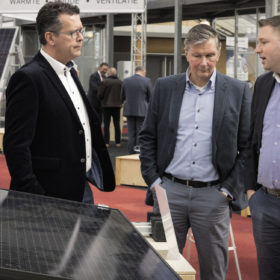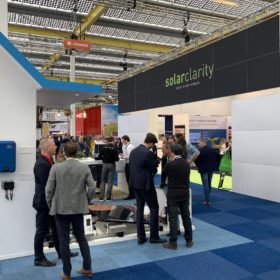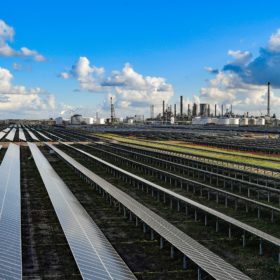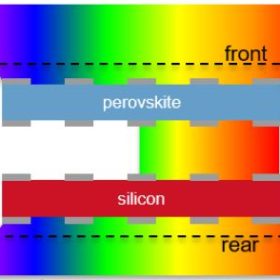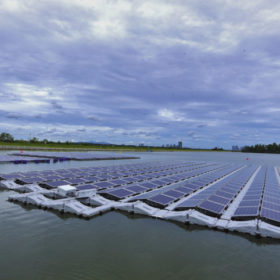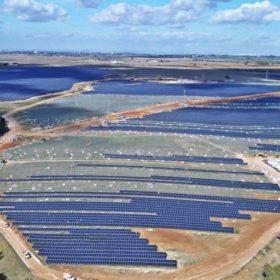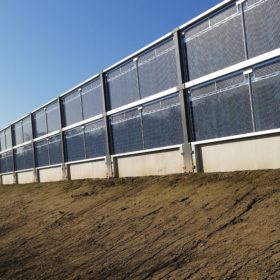Perovskites: A solar scientist’s bread and butter
University of Groningen in the Netherlands is adding its name to the growing list of research institutes that have developed an “industrially scalable” technique for the production of perovskite solar cells. In a separate publication, Russian scientists have reviewed the suitability of one group of perovskite materials for use in space.
Gossip reigns in Dutch Solar-land
If the world of solar was a newspaper, it would be a tabloid. There is no sector where gossip spreads quite so quickly and ultimately does not contribute much. For an example, Good! New Energy’s Rolf Heynen looks back to 2013, when Europe introduced the Minimum Import Price on Chinese solar panels.
Sunny prospects for the Netherlands
The exhibition halls of the Solar Solutions Int. trade fair near Amsterdam are full and visitors seem optimistic. And for good reason, as 2 GW of PV capacity could be built in the Netherlands this year — a solid 40% jump on last year’s installations.
Shell powers chemical operations with Dutch solar park
A 27 MW solar project will generate energy for the company’s extensive site in Moerdijk, in the south of the country.
Netherlands’ ECN achieves 30.2% efficiency for bifacial tandem cell based on perovskite
The cell was created by applying a newly developed perovskite cell on top of an industrial bifacial crystalline silicon version. The resulting cell is said to better harvest sunlight, as one unit is optimized for high energy photons and the other absorbs low energy particles.
The promised land of floating PV now has guidelines for proper deployment
The Netherlands-based Foundation for Applied Water Research has published a Guide for the licensing of floating solar parks on water and developed a tool to measure the effect of PV modules on water quality and quantity and the ecosystem.
European PV market grew 36% to reach 11 GW in 2018
Solarpower Europe has released its estimates for Europe’s installation figures in 2018. A reduction in system prices and a policy push boosted solar across the continent. And if the trade association’s CEO is to be believed, the newfound growth has just begun.
Utility-scale PV all set for growth in Belgium
The energy regulator of Flanders has set a provisional feed-in premium of €0.02595/kWh – to be added to the spot market price – for a 1.35 MW solar project under development in the region. That is considerably more affordable for public support than the feed-in premium of €0.078/kWh the VEA set a year earlier for a 100 MW project under development by Engie.
Bifacial modules ridin’ down the highway
The Dutch government will deploy bifacial PV modules on noise barriers along the country’s main roads. A first, 400m solar array has been built along the A50 near Uden, in the Netherlands’ southern province of Noord-Brabant.
Power-to-gas crucial for solar-based energy system
In the Infrastructure Outlook 2050 study, Gasunie and TenneT say ambitious EU climate targets can only be reached through deeper integration of the power and gas infrastructure, and with power-to-gas technologies supporting renewables. The most bullish scenario for solar states how storage and power-to-hydrogen capacity could be crucial to meet seasonality in supply and demand.

